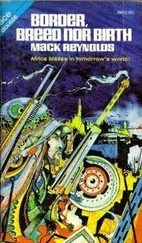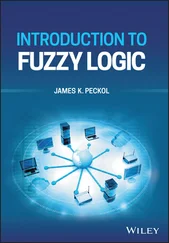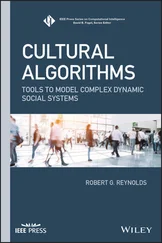Each of these nontraditional ESL/EFL/ELT instructional environments has unique benefits and drawbacks. For each of these instructional environments, the contract, wages, duration, size of the class, instructional materials and resources, and instructional practices will vary.
Which professional setting is the most attractive to you and why? Why would other settings not appeal to you?
Do you think your willingness and interest in working in other settings might evolve and change over time?
Professional Development in TESOL
Many TESOL educators starting in the field begin with academic preparation. Others start their work by accepting a position to teach English through volunteering, serving a mission, or teaching while studying abroad. Still others start their work by helping the English learner or learners at their school when there is not a certified teacher. There are as many routes into the field as there are roots of a tree. No matter how we commence our work in English language teaching, we all need to learn, to collaborate, to have guidance, to have support and affirmation, to grow, and to remain stimulated intellectually. Teaching should be exciting. Kate shares this expression with her student teachers, “When you are bored teaching, your students are 100 times more bored.” For us, there has been no lack of opportunities for professional growth and intellectual engagement because we engage with professional organizations in the field. We are all lifelong learners.
We cannot grow in isolation. Professional engagement allows us to continue to grow after our formal education is completed. We gather new information that builds upon what we already know and from different people and perspectives. We can problem solve and hone our abilities through interaction with peers. We also have opportunities to share our knowledge and experience with others, which benefits all involved. Engaging with colleagues in professional organizations and communities of practice provides opportunities to grow in knowledge and experience in teaching English.
Kate remembers the first conference she attended as being quite exciting because of the hundreds of avenues to explore. She was like a kid in a candy shop with so many decisions to make. So many avenues to choose. Should I choose the sessions on pragmatics in the ESL classroom or pronunciation for beginners? What books have been recently produced for writers at the intermediate proficiency level? The experience helped her generate new ideas of how to engage learners and what and how to teach.
For Kenan, it was a great opportunity to be part of an international organization’s home for English language teachers, teacher trainers and educators, and researchers. He felt privileged to contribute to the development of others and learn from interaction with them as to what can be done to improve the field and how this can be done. We all grow professionally in communities of practice that offer various facilities to improve our communication with people from other countries and gain new insights into our professional practices and area of research. Kenan recognizes three main insights that he gained in such TESOL communities, which include:
constant exposure to and interaction with volunteers who provide professional guidance;
free and intensive learning in communities where every member is dealing with different domains and aspect of the same field; and
ongoing professional development that requires multiple opportunities to engage in tasks that are shared, developed, and sustained to cultivate identity and nurture our professional vision.
Beyond the learning, collaboration, and support we receive from participation, when we engage professionally, it legitimizes us as an ESL/EFL/ELT professional. Other educators and individuals we encounter often recognize our commitment and engagement as a sign of our professionalism. Finally, many individuals start in the field as teachers and over time grow professionally into more specialized career paths. For example, they may become interested in preparing teachers to teach ESL/EFL or in writing ESL/EFL textbooks. Below are some of the organizations that help individuals to develop their skills and progress throughout their careers.
Influential Professional Development Organizations
In 1966 and 1967, respectively, TESOL International Association and IATEFL launched (Alatis, n.d.; IATEFL, n.d.). Over the past 50 years, study of ESL/EFL learning, teaching, and assessment has occurred in conjunction with these and myriad other professional organizations. In this section, we will provide descriptions of the most influential professional organizations in TESOL so that you will become familiar with these professional resources.
IATEFL ( https://www.iatefl.org )
IATEFL is a professional organization founded in 1967 with the goal of “linking, developing, supporting English language professionals worldwide” (IATEFL, n.d.). The organization has a wide reach in Europe and parts of the Middle East and Asia, and even live streams keynote speakers from its conference to 60,000 English language teachers worldwide. The IATEFL conference is held annually in April and attracts approximately 2,500 attendees. The association hopes to support EFL teachers in all parts of the world.
IATEFL is operated by eight trustees who are members and volunteers of the association. Hundreds of volunteers also participate in the governance of the association by volunteering on committees, which are organized by topics such as conference proposals, digital learning, conference organization, scholarships, and membership. Members of IATEFL elect to participate in special interest groups (SIGs). These SIGs allow members to investigate a particular topic related to their work. For example, IATEFL SIGs include Business English, English for Specific Purposes, Global Issues, Learner Autonomy, Learning Technologies, Literature, Materials Writing, Pronunciation, Research, Teacher Development, and Young Learners and Teenagers.
In addition to the annual conference, SIGs offer online webinars and events in various countries. EFL teachers and educators can attend local or regional events or participate online to learn more about the topic and develop their professional network.
TESOL International Association (TESOL, https://www.tesol.org )
TESOL International Association (TESOL) became a professional organization for teachers of English as a second/foreign language in 1966. The organization is run by an executive director, president, and board of directors who work with a core team of not-for-profit business and education professionals and organizational members who volunteer on professional councils and governance committees.
TESOL’s mission is to advance “…the expertise of professionals who teach English to speakers of other languages in multilingual contexts worldwide. We accomplish this through professional learning, research, standards, & advocacy” (TESOL International Association, n.d.). TESOL has affiliates in more than 70 countries worldwide from Albania to Venezuela (see more at https://www.tesol.org/connect/tesol-affiliate-network/worldwide-affiliate-directory), which are operated in an independent manner.
TESOL serves members who teach in public and private prekindergarten to high schools, and adults in community colleges, universities, and language schools. It also serves consultants, materials writers, researchers, and teacher educators (those who prepare teachers).
Its professional development offerings include an annual convention held in North America, online courses, seminars and webinars, academies, institutes, and symposiums. The annual convention draws between 6,000 and 10,000 international participants and offers hundreds of sessions on areas such as culture, digital learning, oral language, materials development, program administration, literacy, assessment, vocabulary, and grammar. The convention has ample opportunities for networking and learning about textbooks and other publications in the field.
Читать дальше












